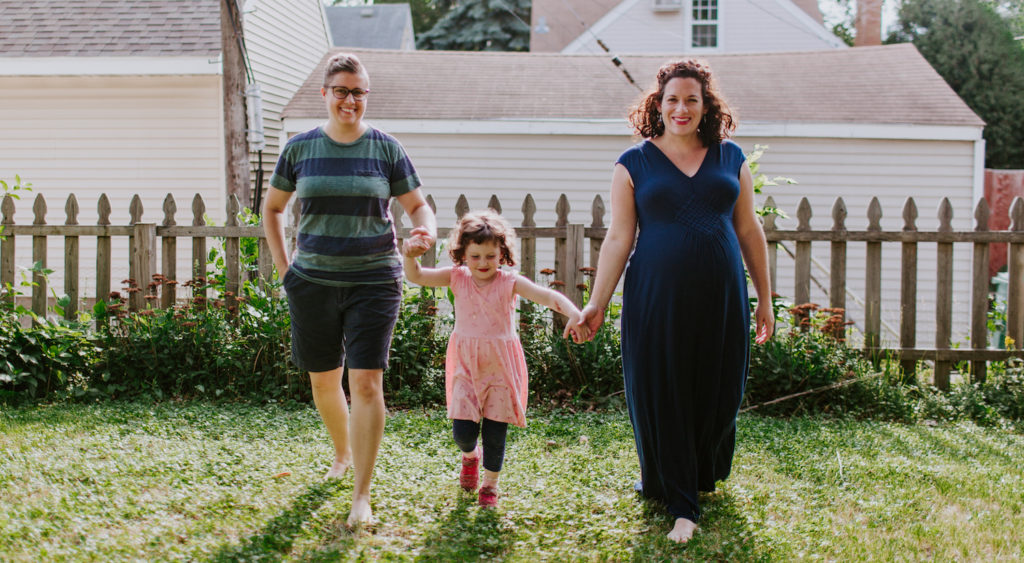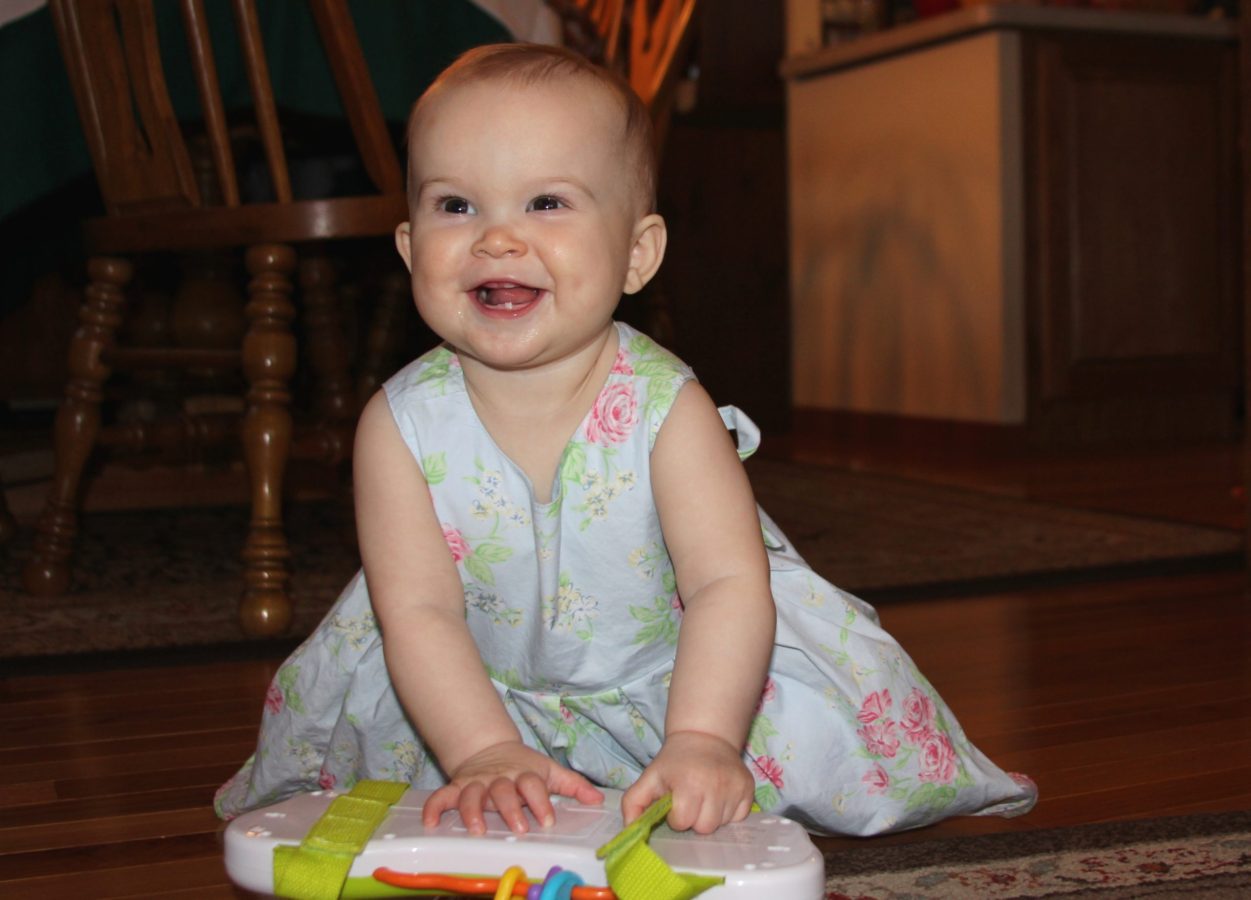Rebecca and Laurel Luxenberg of Minneapolis always knew they wanted children.
Immediately after their wedding in October 2013, they began planning their family.
“On our honeymoon, we watched The Business of Being Born,” Laurel said. “That’s how serious we were.”
Knowing they would need medical help to conceive as a same-sex couple, Rebecca wanted to prepare as much as possible. Even before the marriage, she started tracking her cycle, changed her diet, signed up for yoga and received alternative fertility treatments such as acupuncture and Mayan abdominal massage.
She even tried ancient fertility foods like liver and sardines.
“I had no sense of whether I’d be fertile or not — and because there was a cost associated with getting pregnant, I wanted to throw everything I could at it, so it could happen as quickly as possible,” Rebecca said.
All that work seemed to pay off when she discovered she was pregnant after their first attempt.
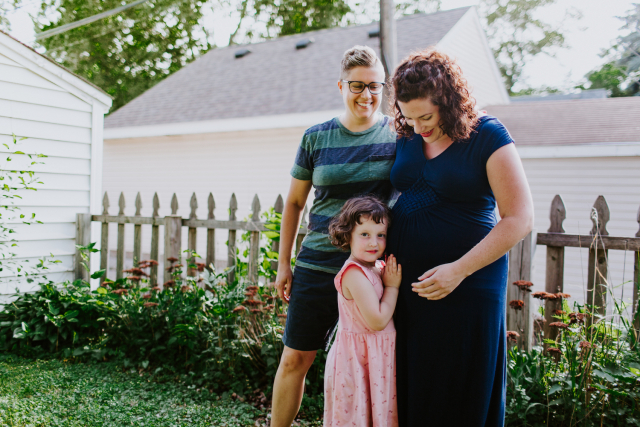
The best-laid plans
Rebecca and Laurel were thrilled. They read everything they could find about childbirth; attended birth, newborn and breastfeeding classes; and began the exciting process of planning for the birth of their first child.
They knew they wanted to pursue a pregnancy and birth as free as possible from medical interventions, such as unnecessary ultrasounds, electronic fetal monitoring and induced labor, and were easily drawn to the idea of midwifery and home birthing, which support such an approach.
“I didn’t know of any health problems,” said Rebecca, who researched birth centers and midwives and ended up choosing the midwives of Trillium Midwifery Care.
“We just clicked. It felt right.”
Rebecca passed a midwifery health assessment and was declared a good candidate for a home birth, so the Luxenbergs arranged for a birthing tub and prepared for a serene water birth in the nursery.
Aside from a surprise, but insignificant, diagnosis of uterine fibroids during a 20-week ultrasound, the pregnancy progressed without complication, and the couple had no reason to assume they wouldn’t have the birth they desired.
Then, at 38 weeks, Rebecca developed a nagging suspicion that something was wrong. She hadn’t felt much movement over the course of a day and began to worry.
“I really didn’t want anything to be wrong,” Rebecca said, “and I really didn’t want to call the midwife. I wanted it to magically fix itself.”
Laurel could sense Rebecca’s fear and made the call anyway.
Midwife Emme Corbeil told Rebecca to eat something, lay down and count the baby’s movements over the course of 30 minutes. When Rebecca hadn’t felt any movement after 15 minutes, she called back. Corbeil calmly instructed the couple to head to the hospital, where she would meet them, to get checked out.
Fetal monitoring revealed the baby was in severe distress.
Under the bright white lights of the hospital triage room, Rebecca was angry and scared. She looked to Corbeil for support and hoped for a different answer. But Corbeil confirmed her fears. It was a life-threatening emergency, and an immediate C-section was necessary.
Less than 20 minutes later, doctors discovered that Rebecca’s placenta was detaching from her uterus and the baby was losing blood, a condition known as placental abruption, which can be life-threatening to both the mother and child.
After the surgery, Laurel held up their newborn baby girl, paper-white in color at the time, for Rebecca to see moments before nurses rushed her to the NICU for an emergency blood transfusion.
Eight excruciating hours passed before Rebecca and baby Adele (Addie) were reunited.

From one trauma to another
Thankfully, Addie recovered quickly, but the trauma of her birth made Rebecca more determined than ever to develop a strong breastfeeding relationship with her new daughter.
Addie, unfortunately, had other plans. She wouldn’t nurse. No matter what. Rebecca was devastated. Again.
“It was just so unbelievable that we’d had this C-section and now my baby won’t breastfeed,” Rebecca said.
For three months post-birth, Rebecca and Laurel tried everything they could think of to get their daughter to nurse. They kept Addie on a three-hour rotation of attempted nursing. When that didn’t work out, Laurel would feed her through a syringe while Rebecca pumped. They hired three different lactation consultants. But nobody could fix the issue.
Eventually, it became too much.
“I was grieving. I was raging. I was really upset,” Rebecca said. “I was also scared. Why did this happen? What’s wrong with my body?”
Laurel said: “It was a really dark time emotionally for both of us.”
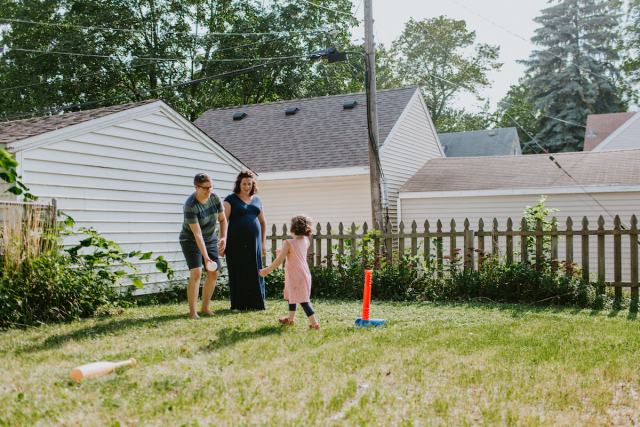
Coping with it all
Dr. Maren McMillan, a licensed psychologist in St. Paul who specializes in perinatal mental health, said that even when there isn’t a life-threatening situation, postpartum mothers often experience grief, trauma and anxiety when things don’t work out as planned.
Anxiety, grief and trauma, McMillan said, exist on a spectrum that includes depression, but they often don’t get screened for the same way that depression does.
“We’ve come a long ways educating people about postpartum depression,” she said. “But I don’t know that there is a lot of conversation about postpartum anxiety and trauma.”
McMillan was inspired to specialize in perinatal mood and anxiety disorders after her own experience with a traumatic birth and postpartum anxiety.
“I knew something was going on with me, but I didn’t understand it — and I’m a mental health professional,” she said. “So I can’t even wrap my mind around what that might be like for women who have no context for this.”
One of the most common experiences she sees in new mothers, even those without a history of mental-health challenges, are intrusive thoughts about harming the baby or themselves. While a very small percentage of women are at risk of following through on these thoughts, most women won’t.
In fact, these thoughts may actually have a purpose.
A recent study out of Yale showed the same parts of the brain that are closely associated with obsessive-compulsive disorder (OCD) fire up when parents hear their babies cry.
Researchers theorize this anxious response provides an evolutionary advantage. Women who become anxious and obsessive about danger are more likely to take preventative action to protect their babies.
McMillan agrees. She said, for the most part, women who experience these thoughts are more likely to be hypervigilant about safety. They may even do things like hide the kitchen knives or avoid walking near stairways with their infants. However, they’re also not likely to admit what’s going through their minds for fear they’ll be locked up or their children will be taken away.
“I want people to know how normal it is,” McMillan said. “This is really about anxiety and protection.”
McMillan encourages women to seek help from a perinatal mental health professional if they aren’t feeling like themselves or begin having intrusive thoughts. It’s important to find someone who is supportive and understands the unique period of time around childbirth and won’t overly pathologize the woman’s experience.
The right provider will do a non-judgmental risk assessment. Families can find professionals through Pregnancy and Postpartum Support Minnesota, which offers a list of providers and resources.
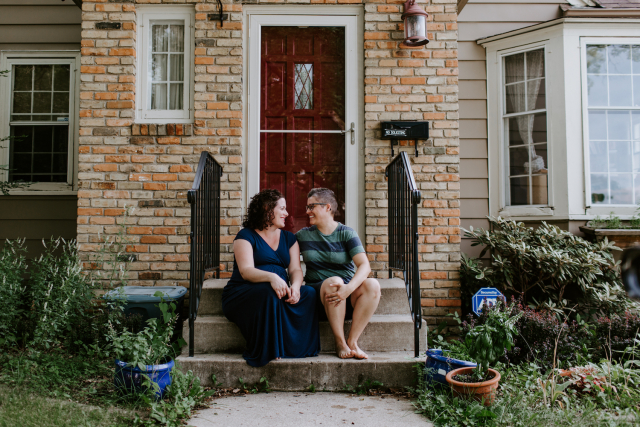
Tools to address trauma
Though Rebecca didn’t have intrusive thoughts after Addie was born, she did seek therapy when she realized anxiety was interfering with her ability to function in new motherhood. Therapy helped her rewrite the story of Addie’s birth, so that it didn’t cause trauma every time she thought about it. She was also able to come to terms with their breastfeeding challenges.
In her own practice, McMillan encourages women to share their stories as much as possible. She said sometimes that’s all they need. She also works with them on what she calls “here-and-now skills,” which may include mindfulness, exposure therapy or radical acceptance.
If there’s a need to more directly address trauma, she’ll use specialized techniques like Eye Movement Desensitization and Reprocessing (EMDR) or Accelerated Resolution Therapy (ART).
EMDR and ART are therapeutic treatments that rely on rapid eye movement and visualization techniques to specifically focus on trauma. Studies have shown these to be exceptionally fast treatments for trauma that once took years to address. McMillan said many of her clients move beyond trauma and create positive change in just one to three sessions.
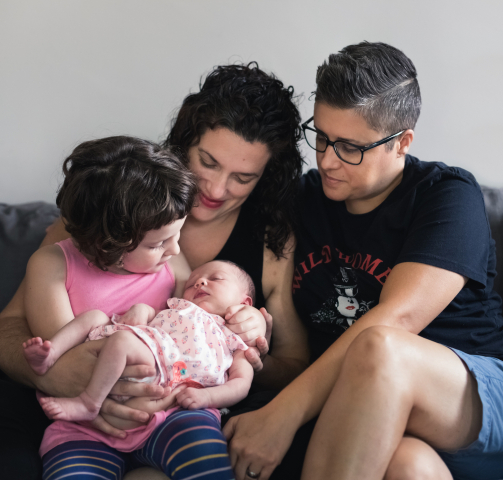
The second time around
Fast forward to 2018: Addie, is a feisty, energetic 3-year-old on her way to becoming a big sister.
Even though Rebecca and Laurel had done a lot of healing since Addie’s birth, the second pregnancy brought much of the past anxiety back to the surface.
Rebecca felt like she couldn’t plan anything for after the baby was born. She simply didn’t have faith that everything was going to be fine.
In the final weeks of the pregnancy, she began having panic attacks during her weekly Non-Stress-Tests (NSTs). Her therapist referred her to a specialist in ART. After three sessions, Rebecca finally felt calm and ready for birth.
“I feel like I moved through and shed so much trauma and fear in those weeks that I hadn’t even realized I had been carrying around with me,” she said.
McMillan said the best way to prepare for any birth is to come up with pieces of your birth plan that are most important to you, and also work on accepting that there are no guarantees.
Birth is one of the few things in life that we have very little control over. If a person has a history of trauma, McMillan recommends seeking support as soon as possible.

A happy ending
Both Rebecca and Laurel worked hard throughout the second pregnancy to accept whatever may come, and although they knew a medical birth was their only option, they still hoped to avoid a C-section.
Fortunately, their story has a happy ending. On Aug. 24, 2018, they joyfully welcomed a healthy baby girl, Sula Berit, after a speedy VBAC (Vaginal Birth After Cesarean) in a hospital.
Sula easily took to breastfeeding.
Rebecca is thrilled she was able to have the natural birth and breastfeeding relationship she always wanted, but still grieves Addie’s rough beginnings.
“As a mother, I wish I could have given them both the same easy start in life,” she said. “But our Addie is a fighter and her birth is just the beginning of her story.”
Postpartum help
Pregnancy and Postpartum Support
Minnesota provides a list of mental health providers and psychiatrists who specialize in perinatal mood and anxiety disorders as well as certified providers who practice alternative modalities of evidence-based treatment that complement traditional medicine and apply a “whole body” focus for healing, rather than treating the symptoms alone. PPSM also includes providers who specialize in working with partners and dads. Find help at 612-787-7776, [email protected] and ppsupportmn.org.
Maren McMillan, a licensed psychologist, loves working with new mothers. She’s at 366 Selby Ave., Suite 200, St. Paul; 651-419-5255; drmarenmcmillan.com
Amanda Webster lives in Roseville with her husband and two kids. Find her at amandawebsterwrites.com.



